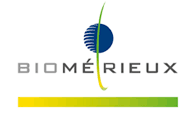Safer, Portable and Low-Cost Imaging Solution to Revolutionize Biomedical Diagnostics
Posted on 18 Jul 2025
In diagnosing diseases and monitoring treatment, accurate and quick detection of temperature within biological tissues can be crucial, especially in early disease detection. Conventional methods such as fMRI and PET scans are costly and require specialized equipment and training. Moreover, these techniques often require invasive procedures that may not be suitable for all patients or situations. This presents challenges in obtaining real-time, non-invasive insights into tissue conditions, such as temperature, which is vital for understanding disease progression or treatment effectiveness. Researchers have now developed a new method that uses light and artificial intelligence (AI) to map temperature within biological tissue in three dimensions. This technique could transform how temperature is monitored inside the human body, offering a non-invasive, less costly, and more portable solution compared to traditional imaging technologies.
The solution, developed by researchers from Ca’ Foscari University of Venice (Venice, Italy) and Universidad Autónoma de Madrid (Madrid, Spain), utilizes luminescent nanothermometers—tiny particles made of silver sulfide (Ag₂S)—which glow in the near-infrared when exposed to light. These nanoparticles are sensitive to temperature and the depth of biological tissue they pass through. A dual-layer neural network trained on hyperspectral images enables the system to reconstruct accurate three-dimensional thermal maps of tissue. The approach turns optical distortions, typically considered a problem in imaging, into a valuable source of information, allowing for accurate thermal measurements. This method could extend beyond temperature sensing, with the potential to measure other parameters like oxygen concentration and pH by adjusting the optical properties of the nanoparticles.

Proof-of-concept experiments demonstrated that this system could detect temperature gradients in both artificial tissue models and real biological samples. In one experiment, the system successfully mapped blood vessels in a living animal, marking the first time high-resolution 3D thermal imaging had been achieved using light alone. The findings, published in Nature Communications, suggest promising applications, with the potential to offer a portable, safer, and less expensive diagnostic tool for use in various settings, even outside of hospitals. Looking ahead, researchers plan to expand this approach to monitor additional intracellular parameters such as temperature, pH, and oxygen, with faster speed and better resolution. The researchers also intend to use this technology for medical diagnostics, biotechnology, and even astrobiology.
“We believe this is just the beginning,” said Erving Ximendes, assistant professor at the Universidad Autónoma de Madrid. “Machine learning offers a powerful tool for navigating the complexity of real biological systems—far beyond what traditional models can achieve.”
Related Links:
Ca' Foscari University of Venice
Universidad Autónoma de Madrid














